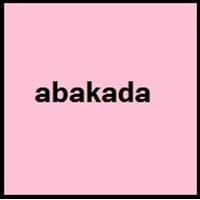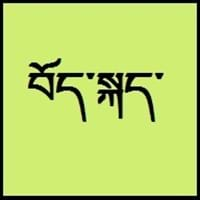Countries
Philippines
China, Nepal
National Language
Philippines
Nepal, Tibet
Second Language
Filipinos
Not spoken in any of the countries
Speaking Continents
Asia, Australia
Asia
Minority Language
Australia, Canada, Guam, Hong Kong, New Zealand, Singapore, United Kingdom
China, India, Nepal
Regulated By
Komisyon sa Wikang Filipino, National Languages Committee
Committee for the Standardisation of the Tibetan Language
Interesting Facts
- In 1593, "Doctrina Christiana" was first book written in two versions of Tagalog.
- The name "Tagalog" means "native to" and "river". "Tagalog"is derived from taga ilog, which means "inhabitants of the river".
- Tibetan dialects vary alot, so it's difficult for tibetans to understand each other if they are not from same area.
- Tibetan is tonal with six tones in all: short low, long low, high falling, low falling, short high, long high.
Similar To
Filipino, Cebuano and Spanish Languages
Not Available
Derived From
Not Available
Not Available
Alphabets in
Tagalog-Alphabets.jpg#200
Tibetan-Alphabets.jpg#200
Scripts
Baybayin
Tibetan alphabet, Tibetan Braille
Writing Direction
Left-To-Right, Horizontal
Left-To-Right, Horizontal
Hello
Kamusta
བཀྲ་ཤིས་བདེ་ལེགས། (tashi delek)
Thank You
Salamat po
ཐུགས་རྗེ་ཆེ་། (tujay-chay)
How Are You?
Kamusta ka na?
ཁྱེད་རང་སྐུ་གཇུགས་བདེ་པོ་ཡིན་པས།
(kayrang kusu debo yimbay?)
Good Night
Magandang gabi
གཟིམ་ལཇག་གནང་དགོས་། (sim-jah nahng-go)
Good Evening
Magandang gabi po
དགོང་དྲོ་བདེ་ལེགས།
Good Afternoon
Magandang hapon po
ཉིན་གུང་བདེ་ལེགས།
Good Morning
Magandang umaga po
སྔ་དྲོ་བདེ་ལེགས། (nga-to delek)
Please
pakiusap
thu-je zig / ku-chee.
Sorry
pinagsisisihan
ཀོང་དགས་། (gawn-da)
Bye
Paálam
ག་ལེར་ཕེབས་། (kha-leh phe)
I Love You
Iniibig kita
ང་ཁྱེད་རང་ལ་དགའ་པོ་ཡོད་ (nga kayrâng-la gawpo yö)
Excuse Me
Ipagpaumanhin ninyo ako
དགོངས་དག བཟོད་དུ་གསོལ། ཐུགས་རྗེ་གཟིགས།
Dialect 1
Batangas Tagalog
Central Tibetan
Where They Speak
Batangas, Gabon
China, India, Nepal
How Many People Speak
Not Available
Dialect 2
Bisalog
Khams Tibetan
Where They Speak
Philippines
Bhutan, China
How Many People Speak
Not Available
Dialect 3
Filipino
Amdo Tibetan
Where They Speak
Philippines
China
Speaking Population
Not Available
Second Language Speakers
Not Available
Native Name
Tagalog
བོད་སྐད་ (pö-gay)
Alternative Names
Filipino, Pilipino
Bhotia, Dbus, Dbusgtsang, Phoke, Tibetan, U, Wei, Weizang, Zang
French Name
tagalog
tibétain
German Name
Tagalog
Tibetisch
Pronunciation
[tɐˈɡaːloɡ]
Not Available
Ethnicity
Tagalog people
tibetan people
Language Family
Austronesian Family
Sino-Tibetan Family
Subgroup
Indonesian
Tibeto-Burman
Branch
Not Available
Not Available
Early Forms
Proto-Philippine, Old Tagalog, Classical Tagalog, Tagalog
Old Tibetan, Classical Tibetan
Standard Forms
Filipino
Standard Tibetan
Language Position
Not Available
Signed Forms
Not Available
Tibetan Sign Language
Scope
Individual
Not Available
ISO 639 6
Not Available
Not Available
Glottocode
taga1269
tibe1272
Linguasphere
31-CKA
No data Available
Language Type
Living
Not Available
Language Linguistic Typology
Object-Verb-Subject, Subject-Verb-Object, Verb-Object-Subject, Verb-Subject-Object
Not Available
Language Morphological Typology
Not Available
Not Available
Tagalog and Tibetan Greetings
People around the world use different languages to interact with each other. Even if we cannot communicate fluently in any language, it will always be beneficial to know about some of the common greetings or phrases from that language. This is where Tagalog and Tibetan greetings helps you to understand basic phrases in Tagalog and Tibetan language. Tagalog word for "Hello" is Kamusta or Tibetan word for "Thank You" is ཐུགས་རྗེ་ཆེ་། (tujay-chay). Find more of such common Tagalog Greetings and Tibetan Greetings. These greetings will help you to be more confident when conversing with natives that speak these languages.
Tagalog vs Tibetan Difficulty
The Tagalog vs Tibetan difficulty level basically depends on the number of Tagalog Alphabets and Tibetan Alphabets. Also the number of vowels and consonants in the language plays an important role in deciding the difficulty level of that language. The important points to be considered when we compare Tagalog and Tibetan are the origin, speaking countries, language family, different greetings, speaking population of these languages. Want to know in Tagalog and Tibetan, which language is harder to learn? Time required to learn Tagalog is 44 weeks while to learn Tibetan time required is 24 weeks.





